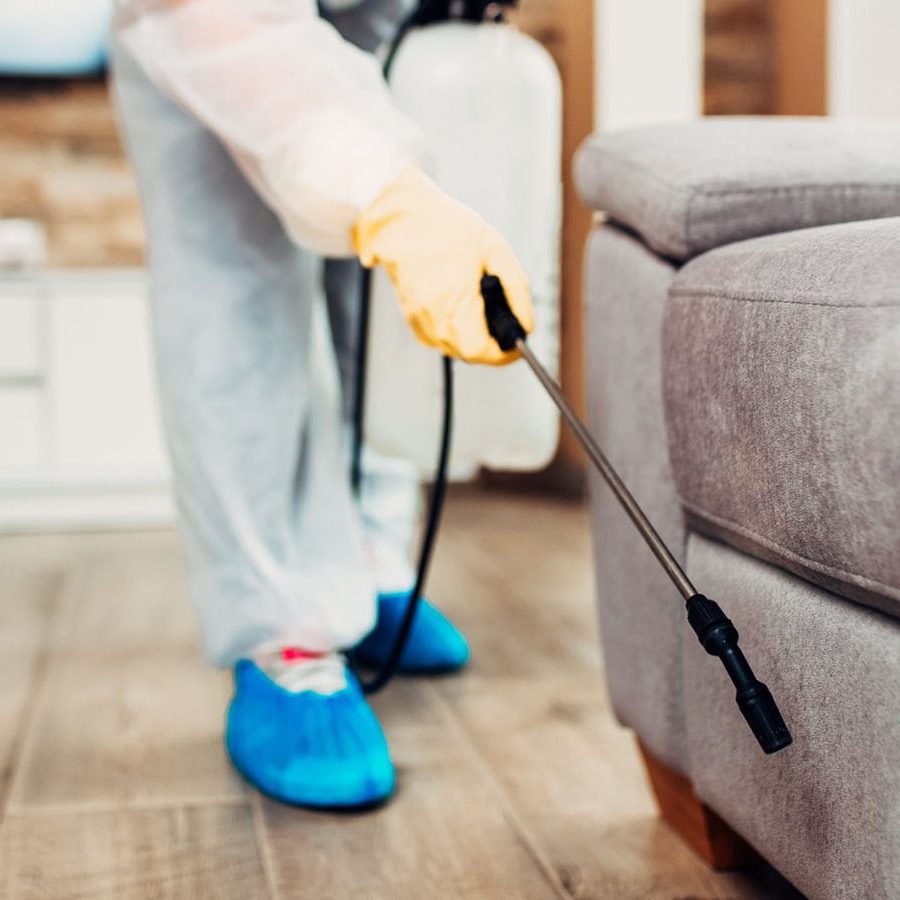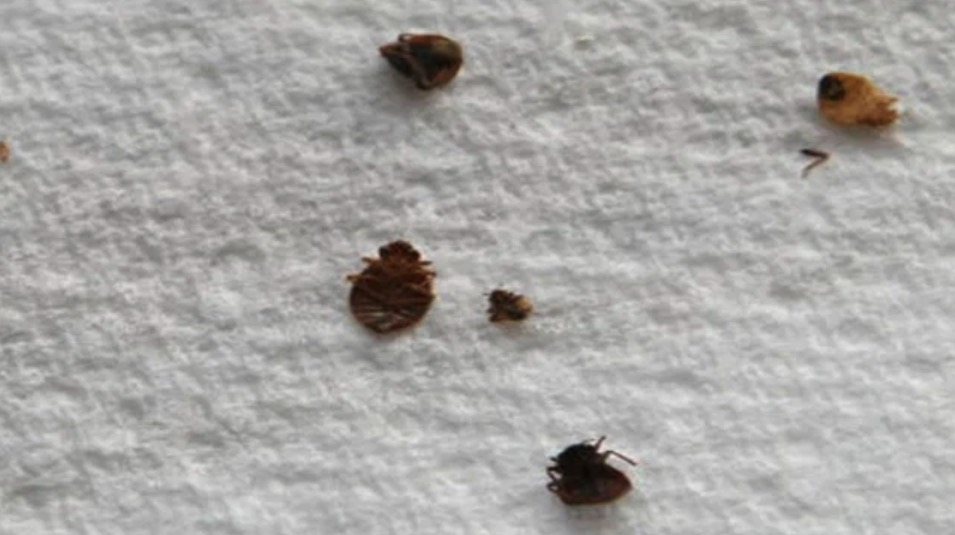You live and breathe your business. You understand all too well that one unhappy customer could drastically impact your reputation, your business, and your family. To ensure that nothing goes wrong, you are constantly thinking of ways to better each of your hotels. Whether it’s the way they look, the amenities they offer, or memorable experiences you want to provide each guest, you pay attention to every detail. But one detail that you cannot seem to control is your worry about a potential pest infestation at one of your properties. THAT, you know, could literally put you out of business. A bad online review could literally shut you down. But you also know that pests are inevitable. So how do you get ahead of the problem? How do you monitor for bedbugs and get rid of them when they show up? You have heard about certain methods — spraying chemicals, mostly — but from what your friends in the business tell you, they are only temporary fixes. You need something permanent; a sure-fire, one-and-done solution.

Bedbugs have, and likely always will be, a worldwide problem. These little pests that are known to infest hotels, motels, Airb&b, apartments, dorms, and more — no matter how clean — are unfortunately apart of our human history.
Now, with the worldwide improvements which have lead to an increase in travel around the globe, both in convenience and accessibility, bedbugs have again been brought to the forefront of the international scene.
Which brings us to the eternal question: What is the fastest way to get rid of bedbugs?
Chemicals have long been the primary methodology, going as far back as the World War II Era, with DDT (Dichlorodiphenyltrichloroethane) emerging as one of the most common and effective, yet problematic, chemicals used. Since then, the new chemicals have emerged on to the scene as hopeful solutions, though many of them have been found to be less effective on bedbug infestations.
The latest research in the pest control industry has confirmed many disturbing facts, namely revolving around the revelation that many strains of bedbugs have developed a resistance to chemical treatments over the years, while others have simply evolved to grow a thicker cuticle, or outer layer, which makes chemicals unable to penetrate the insect and therefore be rendered ineffective.
Now, the chemical companies are suggesting stronger mixtures and higher doses, neither of which are healthy nor effective. In fact, many countries are growing more aware and concerned about the use of these chemical pesticides and their effects on the public, particularly because these pesky bedbugs inhabit sleeping areas used by residents, guests, and other folks for up to a third of each day.
Furthermore, the use and administration of these chemicals often requires expensive, inconvenient licensing, which has sparked scrutiny and a growing movement to issue legislation in order to curb, inspect, refine, and eliminate their use.
So, now for the good news.
Industry research, experts, and common sense has shown that heat treatment to kill bedbugs is a simple, effective, and economical means to destroy them in all stages and in all harborages.
Heat treatments does this without the problematic issues associated with chemicals, including health risks, licensing, and the added inconvenience of being put out of the room for extended periods.
Studies have indicated that temperatures between 50°C (122°F) and 57.2°C (135 °F) kills these pesky bedbugs in all stages of life. Now, sustaining temperatures at, or above, this critical threshold for several hours ensures that the heat properly penetrates the favorite hiding spots of bedbugs, including hard-to-see crevices, headboards, mattresses, picture frames, baseboards, night stands, and nearby furniture. The initial heat exposure essentially paralyzes bed bugs, which prevents them from scurrying, while the sustained heat eliminates their ability to survive altogether. The key to this process is heated airflow, specifically the convection effect, which is similar to cooking a turkey in a convection as opposed to a traditional oven. Heated airflow allows you to penetrate the entire room, rather than just one spot, meaning you can kill all of the bedbugs located in a single room and in all stages of life, including eggs.
Here are some more reasons why heat is the most effective and fastest way to kill bedbugs.





You live and breathe your business. You understand all too well that one unhappy customer could drastically impact your reputation, your business, and your family. To ensure that nothing goes wrong, you are constantly thinking of ways to better each of your hotels. Whether it’s the way they look, the amenities they offer, or memorable experiences you want to provide each guest, you pay attention to every detail. But one detail that you cannot seem to control is your worry about a potential pest infestation at one of your properties. THAT, you know, could literally put you out of business. A bad online review could literally shut you down. But you also know that pests are inevitable. So how do you get ahead of the problem? How do you monitor for bedbugs and get rid of them when they show up? You have heard about certain methods — spraying chemicals, mostly — but from what your friends in the business tell you, they are only temporary fixes. You need something permanent; a sure-fire, one-and-done solution.

Bedbugs have, and likely always will be, a worldwide problem. These little pests that are known to infest hotels, motels, Airb&b, apartments, dorms, and more — no matter how clean — are unfortunately apart of our human history.
Now, with the worldwide improvements which have lead to an increase in travel around the globe, both in convenience and accessibility, bedbugs have again been brought to the forefront of the international scene.

Which brings us to the eternal question: What is the fastest way to get rid of bedbugs?
Chemicals have long been the primary methodology, going as far back as the World War II Era, with DDT (Dichlorodiphenyltrichloroethane) emerging as one of the most common and effective, yet problematic, chemicals used. Since then, the new chemicals have emerged on to the scene as hopeful solutions, though many of them have been found to be less effective on bedbug infestations.
The latest research in the pest control industry has confirmed many disturbing facts, namely revolving around the revelation that many strains of bedbugs have developed a resistance to chemical treatments over the years, while others have simply evolved to grow a thicker cuticle, or outer layer, which makes chemicals unable to penetrate the insect and therefore be rendered ineffective.
Now, the chemical companies are suggesting stronger mixtures and higher doses, neither of which are healthy nor effective. In fact, many countries are growing more aware and concerned about the use of these chemical pesticides and their effects on the public, particularly because these pesky bedbugs inhabit sleeping areas used by residents, guests, and other folks for up to a third of each day.
Furthermore, the use and administration of these chemicals often requires expensive, inconvenient licensing, which has sparked scrutiny and a growing movement to issue legislation in order to curb, inspect, refine, and eliminate their use.
So, now for the good news.
Industry research, experts, and common sense has shown that heat treatment to kill bedbugs is a simple, effective, and economical means to destroy them in all stages and in all harborages.
Heat treatments does this without the problematic issues associated with chemicals, including health risks, licensing, and the added inconvenience of being put out of the room for extended periods.
Studies have indicated that temperatures between 50°C (122°F) and 57.2°C (135 °F) kills these pesky bedbugs in all stages of life. Now, sustaining temperatures at, or above, this critical threshold for several hours ensures that the heat properly penetrates the favorite hiding spots of bedbugs, including hard-to-see crevices, headboards, mattresses, picture frames, baseboards, night stands, and nearby furniture. The initial heat exposure essentially paralyzes bed bugs, which prevents them from scurrying, while the sustained heat eliminates their ability to survive altogether. The key to this process is heated airflow, specifically the convection effect, which is similar to cooking a turkey in a convection as opposed to a traditional oven. Heated airflow allows you to penetrate the entire room, rather than just one spot, meaning you can kill all of the bedbugs located in a single room and in all stages of life, including eggs.
Here are some more reasons why heat is the most effective and fastest way to kill bedbugs.
Call (303) 532-2494
Call (303) 532-2494
Enter the following code in the promo coupon and receive 15% off on your next purchase.
Enter the following code in the promo coupon and receive 15% off on your next purchase.
